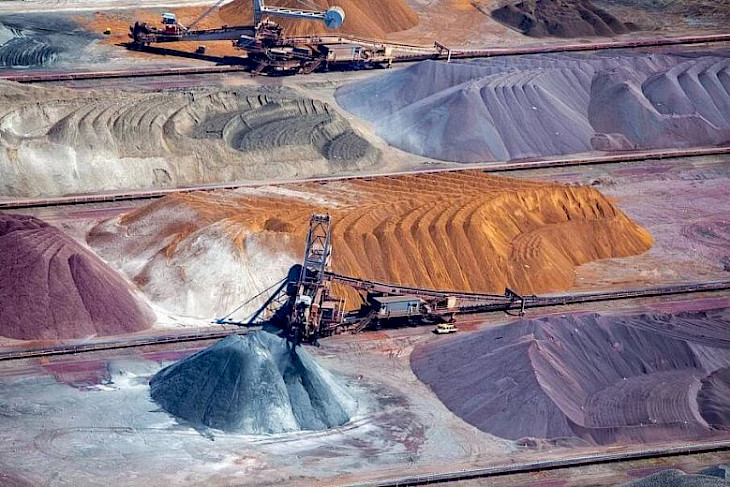China's demand for metals of various groups is steadily growing, which is explained by the country's general course towards expanding industrial production. In this context, one of the options for China is the Central Asian region, which has significant reserves of fuel and energy raw materials, ores, as well as renewable resources.
Read about China's participation in the key enterprises of the mining sector of the Central Asian countries in the article by Maria Khvostova "China's policy in the countries of Central Asia in the field of mineral development".
China in Tajikistan
Of all the countries of Central Asia, China is the most active in extracting minerals in Tajikistan. What tools does he use to do this?
First, China creates joint ventures with a different share of its participation. So, in 2017 Tibet Hua Yu Mining Co. Ltd acquired a 50% stake in CJSC TALCO Gold, investing about $200 million in the project for the extraction and refining of gold, silver, mercury, antimony. The enterprise was opened in the Sughd region in April 2022 with the participation of President Emomali Rahmon.
Secondly, China signs bilateral agreements without setting up joint ventures. For example, China National Machinery Industry Corporation and TALCO, which, as part of its no-tolling policy, have agreed to build two aluminum fluoride and cryolite plants needed to electrolyze alumina in aluminum production.
Third, China implements its policy by obtaining mining licenses in exchange for providing financing.
The development of the deposit is carried out until the full return of funds by the recipient or payment of compensation to them in the form of a specified volume of mined ore.
In doing so, Tebian Electric Apparatus (TBEA) acquired the rights to the Upper Kumarg and Duoba fields in exchange for its investment in the construction of Dushanbe-2 CHP.
Fourthly, China supports the conduct of research work "in the field" (This approach allows us to solve the problem of collecting information and loyalizing local specialists. - Approx. Ia-centr.ru). Thus, specialists from Chinese higher educational institutions, representatives of the Geological Survey of China visited Tajikistan.
Related infrastructure projects in Tajikistan are financed by China with the participation of various banks and companies. For example, through the Asian Infrastructure Investment Bank, funds were allocated for the rehabilitation of the Nurek HPP, and the construction of the Yavan HPP was financed through the Asian Development Bank (ADB).
China in Kyrgyzstan
The nature of China's mining policy in Kyrgyzstan and Tajikistan largely coincides: there are similar forms of presence and organization (TBEA, Exim Bank, ADB, CMEC ...) and related infrastructure projects are being implemented.
For example, TBEA financed the construction of the Datka-Kemin transmission line in Kyrgyzstan. This made it possible to provide an autonomous power supply to the industrial north of the country, since earlier the power line partially passed through Uzbekistan.
China is showing the greatest interest in Kyrgyz gold. Kichi Chaarat CJSC, which is a subsidiary of China National Gold Group Corporation, opened a factory for its extraction and processing. The company owns a license to mine gold from several deposits, including Kuru-Tegerek and Suluu-Tegerek in the Jalal-Abad region, which accounts for up to 15% of Kyrgyzstan's gold.
Perhaps, since 2021, China has taken steps to participate in the development of the largest gold deposit in Kyrgyzstan, Kumtor, due to the unfolding conflict between the Kyrgyz government and the Canadian Centerra Gold Inc. However, they did not lead to a positive result for China: the leadership of Kyrgyzstan set a course for independent development of mineral resources.
In addition to commercial benefits, China is working to solve strategic problems, namely, to ensure the security of the country's northwestern borders.
China's Xinjiang Uygur Autonomous Region (XUAR) borders three of the five Central Asian states and Afghanistan, from where threats of extremism and terrorism originate.
In addition, the strengthening of its presence in Tajikistan and Kyrgyzstan allows China to influence the water supply of the countries of Central Asia as a whole, since it participates in the technological support and re-equipment of hydroelectric power plants, including the most powerful Nurek and Toktogul.
Source: Ia-centr.ru
The StanD,
July 16, 2023

